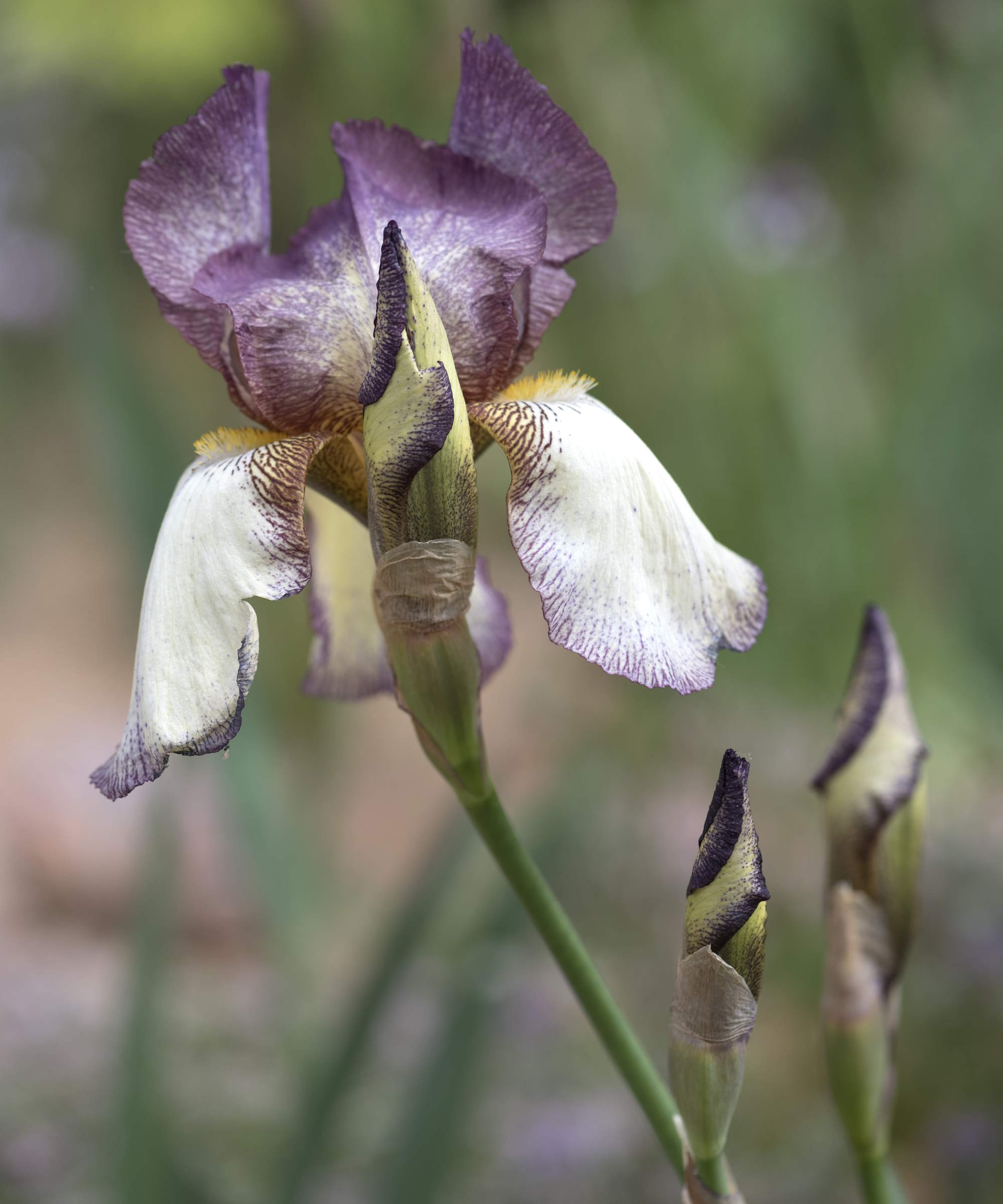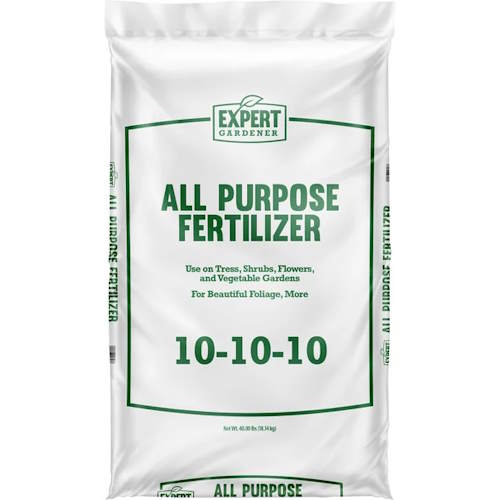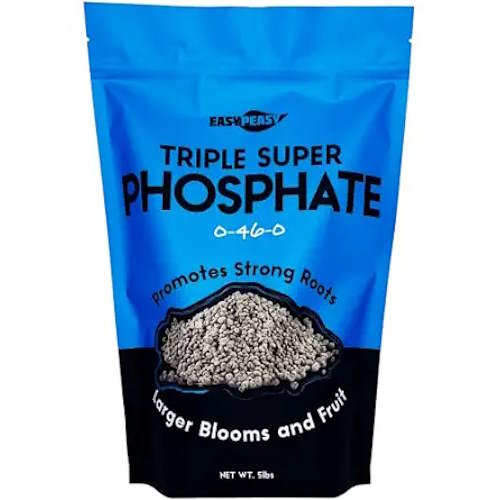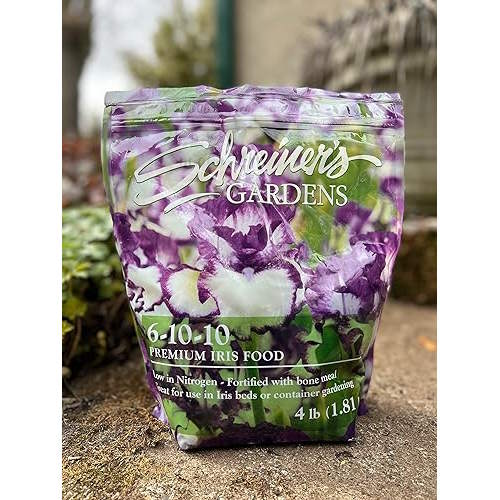Discover when to fertilize irises and which expert-recommended feeds to choose for beautiful blooms
See the dos and don'ts of feeding irises to keep yours healthy and flowering at their best


Irises are wide-ranging and varied, with the genus containing around 250 different species to pick from to provide bursts of glorious color in your garden. They come in bulb forms and rhizome types, and all types will benefit from an annual fertilizing plan.
If you are growing irises, feeding them at the correct time, and with the right fertilizers, will promote strong blooming and keep the plants healthy. Irises have specific nutrient requirements and plants may not flower and be at risk of disease if you fail to get the nutrient balance right.
Get the timing right and choose the best fertilizer for your irises with some expert advice and recommendations from vastly experienced iris growers. Here we focus on feeding irises grown from rhizomes, such as the vastly-popular bearded irises that produce large blooms.

Fertilizing irises promotes lots of blooms - which can come in many colors
What you need to fertilize irises
A few garden tools and common items may be useful to feed irises. That includes a pair of protective gloves for handling fertilizers, a bucket to keep the product in, and a garden hoe or fork to mix the feed into the soil. A watering can or hose is also needed to water the fertilizer into the ground if there is no rain due.
When to fertilize iris plants

An annual fertilizing regime keeps irises flowering at their best
Irises can bloom over a long period. Most bloom from late spring to early summer, however, some dwarf bulb varieties can start flowering in early spring. Many varieties of irises can also bloom again later in the year, though that will depend on the particular type and whether the conditions are favorable. It is always advised to refer to the labels or descriptions of bearded iris varieties to see when a type will be putting on a fantastic show in your flower beds.
When a particular type of iris blooms impacts the ideal time to fertilize it. The plants benefit from being fed twice a year, in early spring and around a month after they have finished flowering.
‘The best time to fertilize bearded iris is before their blooming season, usually right about when tulips start blooming in your area,’ advises Mike Sutton from Sutton’s Iris Garden.
Design expertise in your inbox – from inspiring decorating ideas and beautiful celebrity homes to practical gardening advice and shopping round-ups.
‘For established plants, a late summer or early fall application of the same fertilizer is also a good idea as it helps establish roots and store nutrients for the following spring.’
Any feeding in early fall wants to be done at least six weeks ahead of the first predicted frost for your US hardiness zone and before you cut back irises in late fall or early winter. The post-blooming feeding is an important part of looking after irises as it helps ensure the plant has all the stored nutrients required to put on a fantastic display of blooms next year.
There are other key times in the lifetime of an iris when it will benefit from fertilizer. It is beneficial to add fertilizer when you plant iris bulbs, along with when you split irises.
How to choose the best fertilizer for irises

Irises want fertilizing before and after blooming
Now that we know when irises need feeding, the next important step is how to decide what to fertilize them with to keep them healthy and put on a fantastic show of blooms.
All fertilizer packaging will display the nutrient levels as a ratio of three numbers, and these plant fertilizer numbers show the makeup of nitrogen, phosphorus, and potassium in the product. For example, a balanced feed would have a ratio of 5-5-5 or 10-10-10. All products must show their make-up of nutrients so you know exactly what you add to your plants.
The American Iris Society recommends using a ‘well-balanced fertilizer with an N-P-K ratio of 10-10-10 or 5-10-10’, highlighting both superphosphate and alfalfa pellets as very beneficial products for feeding irises. Mike Sutton also says he uses a ‘pretty balanced fertilizer’ at the same ratio to feed irises at Sutton’s Iris Garden.
Avoid using any fertilizers that are high in nitrogen, as this will promote the growth of green leaves. Such an abundance of foliage is unnecessary, it can lead to lots of leaves but no blooms, and the iris is more susceptible to pests and diseases.
Schreiner's Iris Gardens recommends a low-nitrogen fertilizer with a ratio of 6-10-10 - and highlights bone meal and also superphosphate as effective - while Lori Rhodes from Crafton Hills Iris Farm advises: ‘For the past few years we have been using a 6-10-10 formula and have really liked the results.’
Using alfalfa pellets, as highlighted by the American Iris Society and supported by Mike Sutton, is great when planting, but it can also be used on established irises. You can get bags of alfalfa pellets at Amazon.
‘Integrating corn-free alfalfa pellets into the pre-plant soil has proven to be pretty beneficial for overall health and growth of iris,’ adds Mike. ‘Alfalfa pellets can also be scratched into the soil around established clumps with similar benefits to pre-plant integration.’
Apply the fertilizer around the iris rhizomes, but not directly onto them. The best fertilizers for irises are slow-release granular products that should be scattered well away from the rhizomes and mixed into the soil - before being watered in well.
Mulching around the rhizomes can also help to retain moisture in the soil and provide additional nutrients - but never cover the iris rhizome with mulch as it can cause it to rot.
Shop recommended fertilizers for irises
FAQs
What is a good homemade fertilizer for irises?
The best homemade feed for irises would be garden compost that can help to develop soil health and fertility, whether added to the soil before planting irises or used as a mulch post-planting.
You can make compost from garden waste, kitchen waste, and other usual compost ingredients, such as ash, chicken manure, or straw from household pets. If you try hot composting, you can make super-speedy crumbly compost in around a month.
Can you use Miracle-Gro on your irises?
It is not advisable to use Miracle-Gro potting soil or all-purpose plant feed on irises as the products are high in nitrogen. Irises want to be fertilized with low-nitrogen feeds, so look out for products where the ratios of phosphorus and potassium are equal to or higher than that of nitrogen.
Deadheading irises is not seen as an essential task by many who grow the plants. However, removing spent blooms can help the health of irises as it directs energy into the rhizome to be stored and used for next year’s flowering.

Drew has worked as a writer since 2008 and was also a professional gardener for many years. As a trained horticulturist, he worked in prestigious historic gardens, including Hanbury Hall and the world-famous Hidcote Manor Garden. He also spent time as a specialist kitchen gardener at Soho Farmhouse and Netherby Hall, where he grew vegetables, fruit, herbs, and cut flowers for restaurants. Drew has written for numerous print and online publications and is an allotment holder and garden blogger. He is shortlisted for the Digital Gardening Writer of the Year at the 2025 Garden Media Guild Awards.


